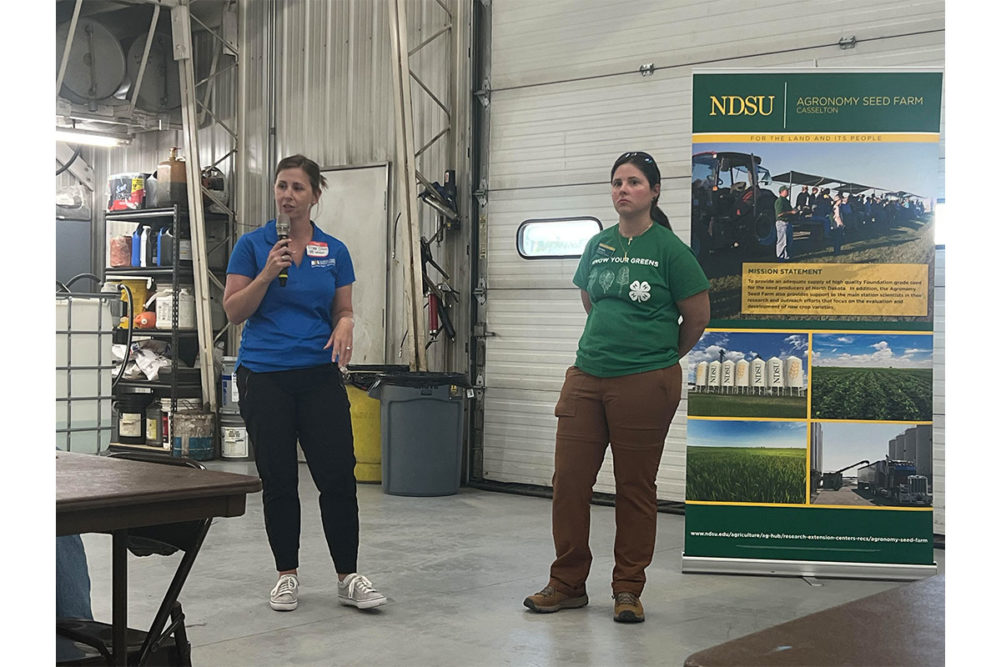FARGO, ND. — After a long, cold winter, “June and July got their temperatures mixed up.”
That weather profile from North Dakota State University agronomists was part of the background issued to 57 scouts gathered on the eve of the 2023 Hard Spring Wheat and Durum Wheat Quality tour.
Early May temperatures were below average, delaying snowmelt. The lengthy wait for the seeding window to open had many producers envisioning a second straight year with hefty “prevent plant” acres, said Clair Keene, an NDSU agronomist specializing in corn and wheat.
“But then it got very warm very quickly, and we had the temperatures of August in June,” she said. “Wheat got planted later than it generally does. Producers like to plant spring wheat and durum in late April in the southern tier of North Dakota, early May to mid-May in the middle and northern tiers.”
Freezing cold temperatures that hung on well into spring gave way within weeks to 90° and 95° weather — mid-to-late-summer temperatures that were not ideal for the early development stages of wheat plants, which thrives when it gets off to a cool start with plenty of moisture that allows additional tillers (stems) to form.
“I don’t think there will be a lot of fields out there with a lot of tillers,” Ms. Keene said during a wheat tour information and measurement training session at NDSU’s Agronomy Seed Farm in Casselton, ND. “So, I’m not expecting a bumper crop. However, what yields are going to be across the state will be very dependent on local growing conditions. I’ve heard from some farmers that they think they have average to above-average yields, but a lot suspect they have below average yields. Rainfall has been very sporadic. Even this farm as an example, our weather station on one side of the farm had a couple of tenths of an inch and the station on the other side of the farm had an inch. In the dry North Dakota spring, that makes a really big difference.”
Meanwhile, select areas received hefty rainfall totals in recent weeks, such as the monster downpours that left behind as many as 10 inches near Langdon in North Dakota’s Cavalier County in a short amount of time. Some fields were flooded, and scouts may see some drowned-out pockets when the tour circles back through the northeastern part of the state on July 27.
Scouts from across the wheat value chain — producers, elevator operators, millers and bakers — along with representatives from academia, government and media were set to depart Fargo early July 25 in 14 rented SUVs and minivans, each following one of seven color-coded routes toward Mandan, ND. Along the way, scouts planned to stop at unfenced wheat fields to visually assess and measure wheat. Routes are consistent from year to year in order to provide comparisons.
Visual assessments include observing wheat stands and wheat color, checking for insect or weed pressure, and looking for foliar diseases. Presence of the latter was expected to be minimal. However, there was a risk of scab “depending on who caught rain and when,” said Andrew Friskop, a cereal crop extension plant pathologist at NDSU. Pockets of southwest North Dakota were most at risk for scab.
Scouts planned to measure plant height, heads per yead, kernels, and row spacing. Using a formula, those measurements will be converted into bus-per-acre yield estimates for each field. Field yield estimates were to be averaged per car and then averaged with all other car totals to create yield estimates for Day 1. The process was to be repeated on the final two tour days, generating a total tour yield estimate.





